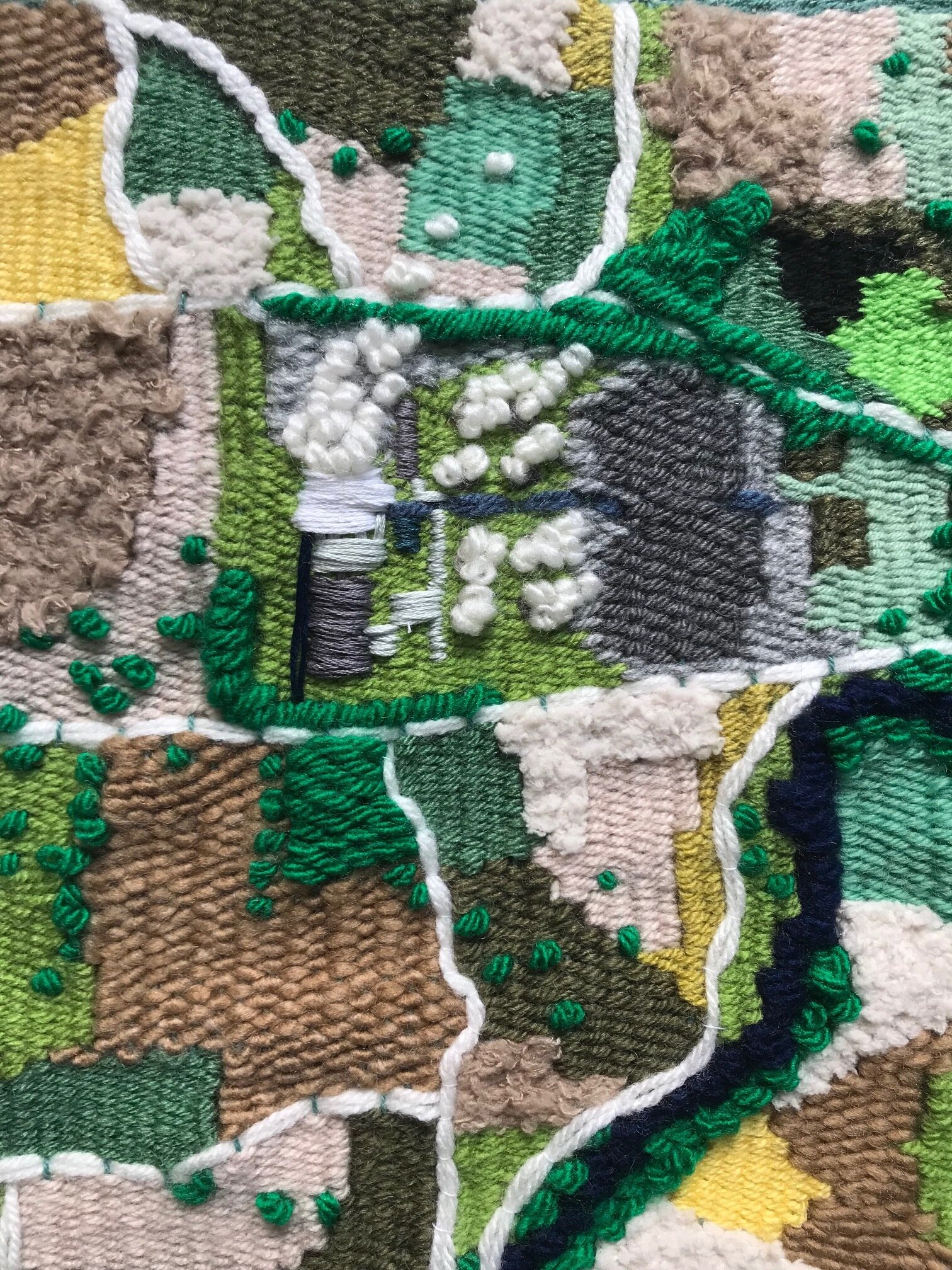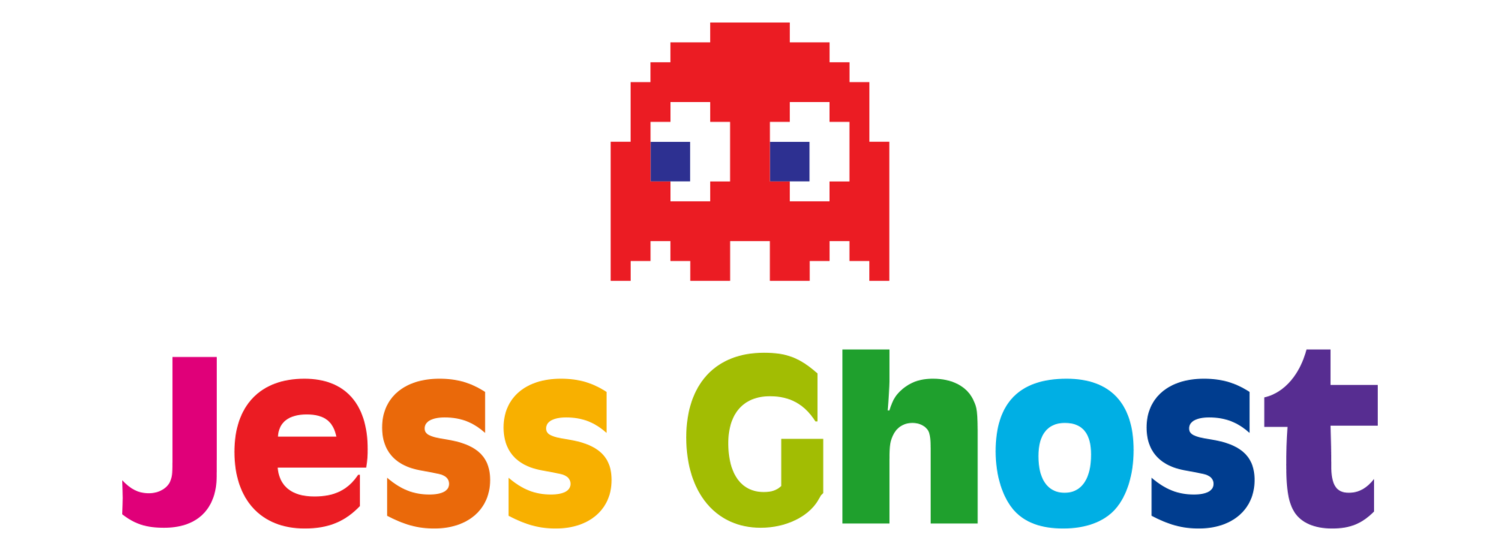Portraying Power Stations: Part 3
Back in February 2020, one of my first blog posts featured my second ever piece of weaving: an A3-sized tapestry that pictured a bird’s-eye-view map of Cottam Power Station and the fields around it.
Finally, over eighteen months later, I’ve completed a companion piece. This time, it’s a nuclear power station in a setting that has similarities and differences to that Nottinghamshire landscape.
Introducing my tapestry of Torness Nuclear Power Station, located near Dunbar, Scotland, just over 30 miles East of Edinburgh:
Torness is run by the French multinational company EDF (Électricité de France), which is mainly owned by the French state. It’s been in operation since 1988, has two advanced gas-colled reactors, and is set for retirement in 2030. Over 550 employees work there full-time.
Like other nuclear power stations, there’s a caravan park right next to Torness. Unlike other power stations, Torness is not surrounded by a nature reserve. (I always find these contrasts bizarre and amusing.)
I thought a landscape with a nuclear power plant would be a good sequel to the coal power station landscape, and Torness seemed to offer the most interesting landscape.
Somehow (read: by being inattentive), I managed to make this tapestry longer yet narrower than the first one, but I still quite like them as a pair.
I deliberately used the same yarns for the fields and features in the second piece, just to create some harmony between the two, but the sea obviously needed a whole new set of colours. The shapes in the sea, too, also differ wildly from the rest of the sections in both tapestries. I’m not sure I got that right, but it’s something I can sit with for a while.

My favourite parts of the new tapestry are the intersecting lines and sections in the bottom: there’s a very straight railway line in dark grey, and a twisting line of trees (hiding a river) that crosses over it, and a road that’s somewhat parallel to the railway line curves in towards it. I quite like the way these lines cut through the whole space, though I probably prefer the way the river does that in the first tapestry.



One of the things I was determined to do differently in this tapestry was to ensure it held together more firmly as one piece of fabric. This is because I’d experimented with not interweaving some of the different colours in the first one, and while that looks fine, it creates holes if you move the tapestry. In the new tapestry, I used interweaving whenever I could, and I don’t actually think it makes any of the lines less sharp.
A flaw I carried over from the first landscape is my seeming inability to keep the tension right throughout the whole piece, and so this one curves in towards the middle and has lumpy edges. I might need to make some sort of contraption to keep things straight.

I’m still not sure how to finish or display these, so if you have any thoughts, I’d be glad to hear them. The very short fringe of the first tapestry perhaps causes some limitations, but I’ll keep trying different things and see what does or doesn’t work.
Shifting Energies
The process of phasing out coal in Britain has happened fairly quickly. At the time of writing, there are only two coal-fired power stations that are connected to the National Grid (though Drax, which now defines itself as a biomass power station, is dragging its feet on closing down its coal-burning facilities, you know, just so it can help out in this coming energy crisis, if needed). About 5% of Britain’s energy currently comes from coal, though it’s often much less, while around 21% is generated by GB’s fifteen operable nuclear reactors.

The Government would like nuclear power to generate about 25% of the UK’s electricity, but nearly half of the current plants are due to be decommissioned by 2025. Two new reactors are under construction at Hinkley Point in Somerset, which hasn’t been without controversy (mainly due to the huge cost and the involvement of state-owned Chinese companies), and another four sites have been chosen for new reactors, all of which either currently have operable power plants (Sizewell in Suffolk) or have decommissioned power plants (Wylfa Newydd on Anglesey, Bradwell in Essex, and Oldbury, less than 15 miles north of Bristol).
The two reactors at Torness, then, can produce about 13.4% of the UK’s nuclear energy — enough for 2.7 million homes, according to its website.
The Future of Energy
Generally less than 5% coal, or thereabouts, and perhaps only up to 25% nuclear energy in the future. The figures sound promising for a future of safe, renewable, green energy, you might think. It would, if only it wasn’t for gas, which — at the very moment I’m writing this — is generating 28.6%. That’s more than wind, the next biggest electricity generator, at 26.8%, though when that figure is combined with the 12.9% from solar photovoltaic, it means that the majority of our energy does come from renewable sources.
I’m yet to decide if a further companion tapestry will be forthcoming, but if it does, it’ll have to be from one of those areas of gas, wind, or solar.
Further Information and Links
A summary of “Nuclear Power in the United Kingdom” by the World Nuclear Association.
An Energy UK article on Nuclear Generation.
A fascinating website showing the live status of the National Grid, updated every 5 minutes. As I write this sentence, exactly 50% of today’s energy is from renewable sources. Hooray for the right amount of wind!
Newsletter
At the end of every month, I send out a newsletter. It features a quick blog round-up, behind-the-scenes details, progress updates, pictures and oversharing. If you like the content I create, you can sign up here.










